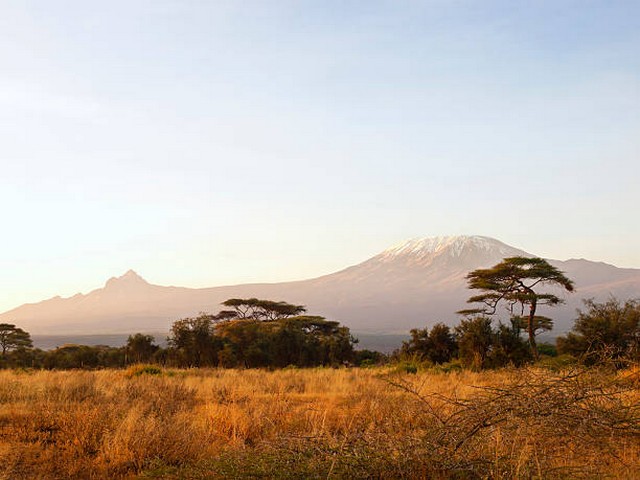Safety Guide For Kilimanjaro Trekking: Ascend with Confidence
Embarking on a journey to climb Mount Kilimanjaro is not just an adventure; it’s a transformation. Every year, thousands of trekkers like you are drawn to the majesty of Africa’s highest peak, seeking not only to challenge their physical limits but to encounter a world above the clouds. However, the path to the summit is layered with varying climates and terrain, making safety an essential ingredient in your trekking recipe. At Kilimanjaro Centre For Trekking and Ecotourism (KCTE), we prioritize your well-being above all else, ensuring that every step you take on this mountain is secure, informed, and inspirational.
Understanding the Terrain and Altitude
The Climb: What to Expect
Mount Kilimanjaro is not a technical climb but a trek that demands endurance and preparation. The mountain’s geography spans through lush rainforests, alpine deserts, and arctic summits, each zone presenting its own challenges. Understanding these environments is your first step toward a safe trek.
Altitude Awareness
Ascending beyond 2,500 meters (8,200 feet) exposes trekkers to the risks of high altitude, including Acute Mountain Sickness (AMS). Recognizing the symptoms of AMS—headache, nausea, dizziness—and knowing the proper responses are crucial for all climbers.
Preparation: Your Key to Safety
Physical Fitness
A fit body is your best defense against the mountain’s challenges. Engage in comprehensive training months before your trek, focusing on cardiovascular stamina, leg strength, and altitude acclimatization, if possible.
Gear Up Correctly
The right equipment can make or break your Kilimanjaro experience. From thermal layers to protect against sub-zero temperatures to sturdy hiking boots that can tackle rocky paths, quality gear is essential. Don’t forget sun protection and hydration systems!
Travel with Experts: Why Choose KCTE
Guided Tours: The Safer Choice
Navigating Kilimanjaro without an experienced guide is not advisable. KCTE’s certified guides are trained in first aid, mountain rescue techniques, and high-altitude medicine. They are not only experts on the terrain but also on ensuring your safety and comfort throughout the journey.
Safety Protocols and Support
Our teams are equipped with emergency oxygen, altitude sickness medication, and regular health checks. With KCTE, you are never alone. Our support staff and porters ensure that your focus remains on the experience while we handle the logistics and safety measures.
Day-by-Day on the Mountain: What to Expect and How to Stay Safe
Daily Health Checks
Every day begins with a health assessment. Our guides monitor your well-being closely to make any necessary adjustments to your trek plan, ensuring that your ascent is both enjoyable and safe.
Pacing and Acclimatization
We emphasize a "pole pole" (slowly, slowly) approach to climbing Kilimanjaro. This method helps in gradual acclimatization and reduces the risk of altitude sickness. Our itineraries are designed to allow ample time for your body to adjust to the altitude, including rest days and shorter trek days.
Emergency Preparedness: Ready for Anything
Evacuation Plans
In the unlikely event of an emergency, KCTE has a detailed evacuation plan ready. Helicopter rescues and descent to lower altitudes are coordinated swiftly to address any medical emergencies.
Communication Systems
Our teams are equipped with radios and satellite phones to maintain communication lines at all times. Whether it’s a route change due to weather or an urgent situation, we ensure information is timely and clear.
Leave No Trace: Protecting Kilimanjaro’s Beauty
Environmental Responsibility
As you embark on this life-changing journey, remember that preserving the mountain’s ecosystem is part of every climber’s duty. KCTE adheres strictly to the Leave No Trace principles, minimizing environmental impact and encouraging all trekkers to do the same.
FAQs: Safety on Kilimanjaro
What is the best time of year to climb Kilimanjaro?
The best times are during the dry seasons, from late June to October and from late December to early March.
Can children climb Kilimanjaro?
Yes, children from the age of 10 are welcome to climb Kilimanjaro, provided they are accompanied by an adult and are physically prepared.
How do I deal with altitude sickness?
The best approach is preventive—acclimatize properly, stay hydrated, eat well, and ascend slowly. If symptoms arise, inform your guide immediately for assessment and treatment.
What should I pack?
Essentials include layered clothing, waterproof gear, sun protection, a good sleeping bag, and your camera to capture the summit’s sunrise!
Conquer Kilimanjaro with Confidence
Climbing Kilimanjaro is an exhilarating challenge that offers more than just bragging rights. It’s a journey through diverse ecosystems, a test of personal endurance, and a gateway to breathtaking views atop the Roof of Africa. With the right preparation and by choosing Kilimanjaro Centre For Trekking and Ecotourism (KCTE) as your trusted guide, you’re setting up for a successful and safe adventure. Are you ready to take on the challenge? Book your climb with KCTE today and experience Kilimanjaro with the experts in adventure and safety. Let’s make your dream of reaching the summit a reality, safely and memorably.
Embark on your journey. Embrace the adventure. Ensure your safety. Engage with KCTE.




